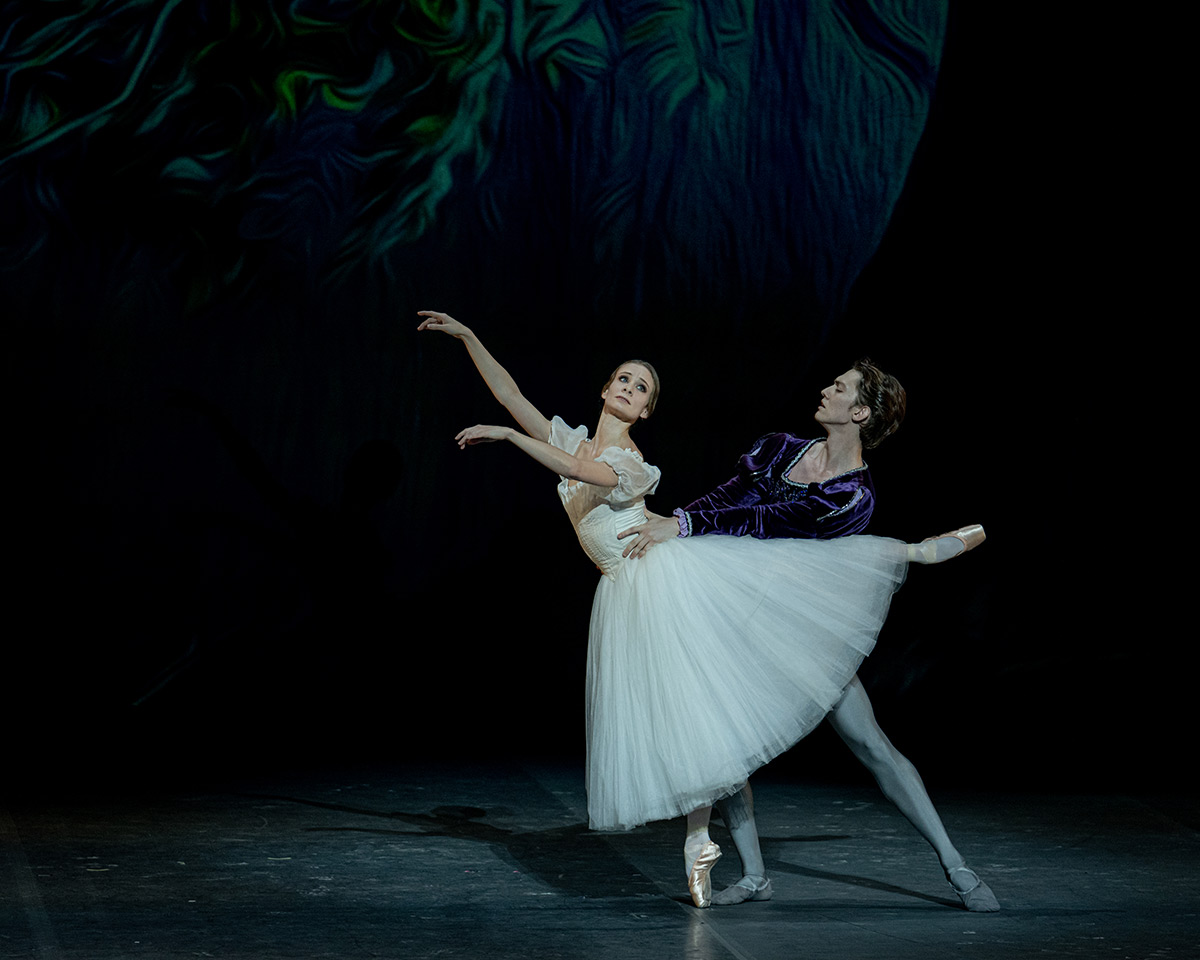
© Jack Devant. (Click image for larger version)
Ballet Icons Gala
★★★★✰
London, Coliseum
26 November 2021
ensembleproductions.co.uk
www.londoncoliseum.org
The annual ballet gala organised by Olga Balakleets and Ensemble Productions was deferred to the end of this year because of coronavirus restrictions. Fortunately, invited dancers from European countries were able to travel before the latest measures were imposed. They were joined by stars from our resident companies, the Royal Ballet and English National Ballet (ENB). As ever, the programme consisted of gala pas de deux favourites, interspersed with UK premieres: there was just one solo, by Sergio Bernal, since Natalia Osipova cancelled her scheduled appearance because of illness. The orchestra was the English National Ballet Philharmonia, conducted this year by Jonathan Lo, meeting the challenge of accommodating dancers’ demands at short notice before their gala appearances.
The evening started with a short film of the participants in rehearsal, preparing to celebrate the return of dance on stage. The souvenir programme contains snapshots of eight of them in their homes during lockdown, holding on to bits of furniture for support, balancing in confined spaces and, in Guiseppe Picone’s photo, sharing his excercise mat with his dog. It is amazing how dancers have recovered (and even bettered) their form after being cooped up for so many months – a tribute to their self-discipline, resolution and hard work.
Nicoletta Manni from La Scala Ballet opened the gala in the Black Swan pas de deux from Swan Lake with Jacob Feyferlik (now with Dutch National Ballet) as her partner. She was seductively manipulative in a slightly different version of the choreography from the Royal Ballet’s account. A Wayne McGregor pas deux from Chroma followed, taking the audience by surprise to see Royal Ballet dancers in skimpy underwear shape-shifting to Joby Talbot’s rearrangement of a White Stripes number, The Hardest Button to Button. Marcelino Sambé did indeed look as though he was trying to wrangle Yasmine Naghdi through a too-tight buttonhole as they tussled with each other, sassy and insouciant. The duet was a reminder of how much McGregor’s choreography has changed since Chroma was created for the Royal Ballet back in 2006.
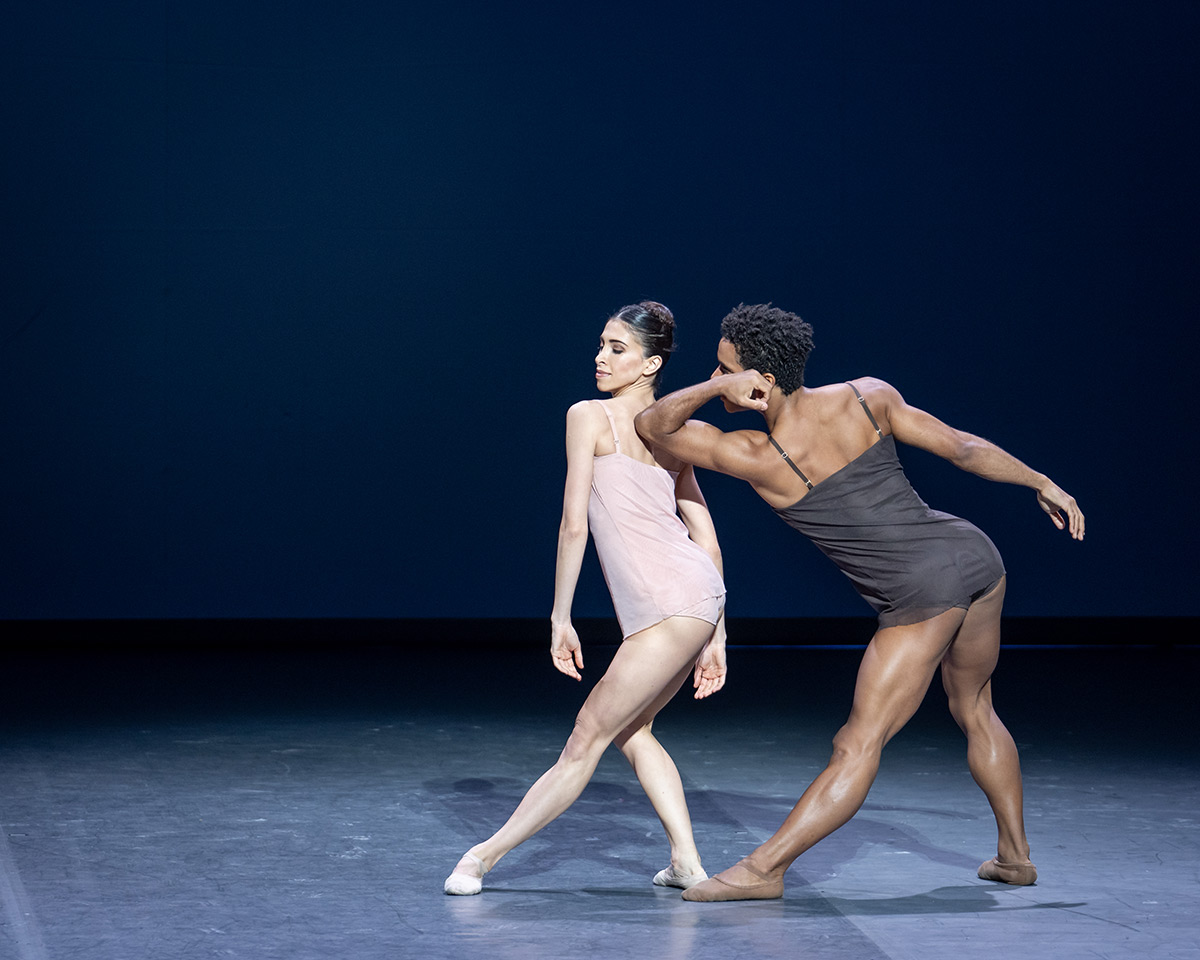
© Jack Devant. (Click image for larger version)
Next came the Act II pas de deux from Giselle, fastidiously danced by Léonore Baulac, an étoile from the Paris Opera Ballet, with Julian MacKay as Albrecht. He joined San Francisco Ballet (SFB) in 2020, after pursuing an international career as a youngster. He is a member of the Khan-Mackay family from Montana – siblings who became ballet dancers, three of whom have links with Ensemble Productions. Julian graduated from the Bolshoi Ballet Academy in Moscow, won a Prix de Lausanne scholarship to train with the Royal Ballet and joined the Mikhailovsky Ballet before moving to SFB. He has matured as a performer, partnering Baulac securely as she evoked Giselle’s forgiving spirit, never easy in a gala context.
A contrast followed in the form of an inexplicable modern dance duet by Mauro Bigonzetti. Originally created for his Italian company Aterballetto in 2005, Passo Continuo was performed by two principals from the National Ballet of Portugal, Filipa de Castro and Carlos Pinillos. They exchanged each other’s weight in close, grappling lifts and shared animalistic choreography – crouching with bent elbows and wrists, feet flexed, to accordion music by Anton Giulio Galeandro. The otherwise informative programme notes could provide no guidance.
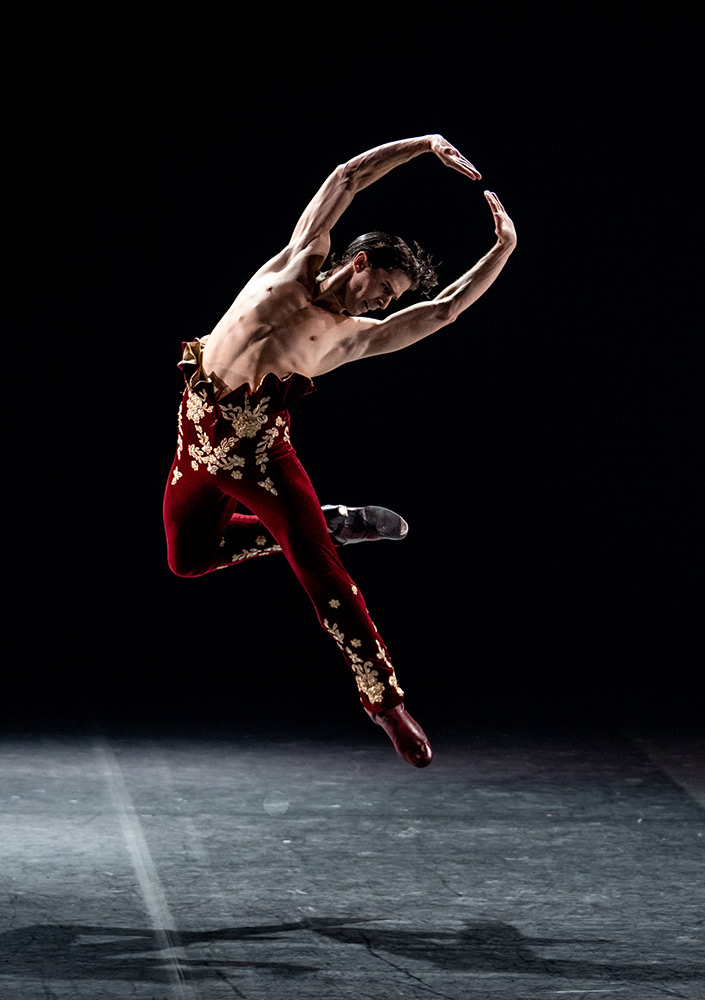
© Jack Devant. (Click image for larger version)
Sergio Bernal’s spectacular solo, Overture, combines flamenco and ballet. His heeled shoes stamped zapateado rhythms to percussive music by the Iberian band Coetus, before he spun in balletic pirouettes and hurtled in flying leaps. His claret velvet leggings, encrusted with gold embroidery, erupted in ruffles around his bare torso – an outfit that emphasised his matador’s allure. He acknowledged the audience’s enthusiastic applause with a grin and a caper as he left the stage.
Snow Storm, the following duet for Lucia Lacarra and Matthew Golding by Yuri Possokhov, is an enigmatic mini-ballet. Possokhov has based it on a Pushkin short story about a blizzard that disrupts a woman’s plan to elope with her soldier sweetheart. They lose each other in a snowy forest – a tragedy for her until she finds love with another, with a twist at the end of the tale. The music by Georgy Sviridov comes from a suite the composer made of his score for a film of Pushkin’s story. The duet started with film of a wintry forest serving as the setting for the lovers’ anguished search for each other. Since Lacarra was wearing a long black shift, unsuitable for an elopement, she might have been the soldier’s memory: her pale, slender limbs looked ethereal against the stark backdrop. Golding, muffled in greatcoat and boots, partnered her passionately. He was left alone at the end, so there didn’t appear to be a happy ending.
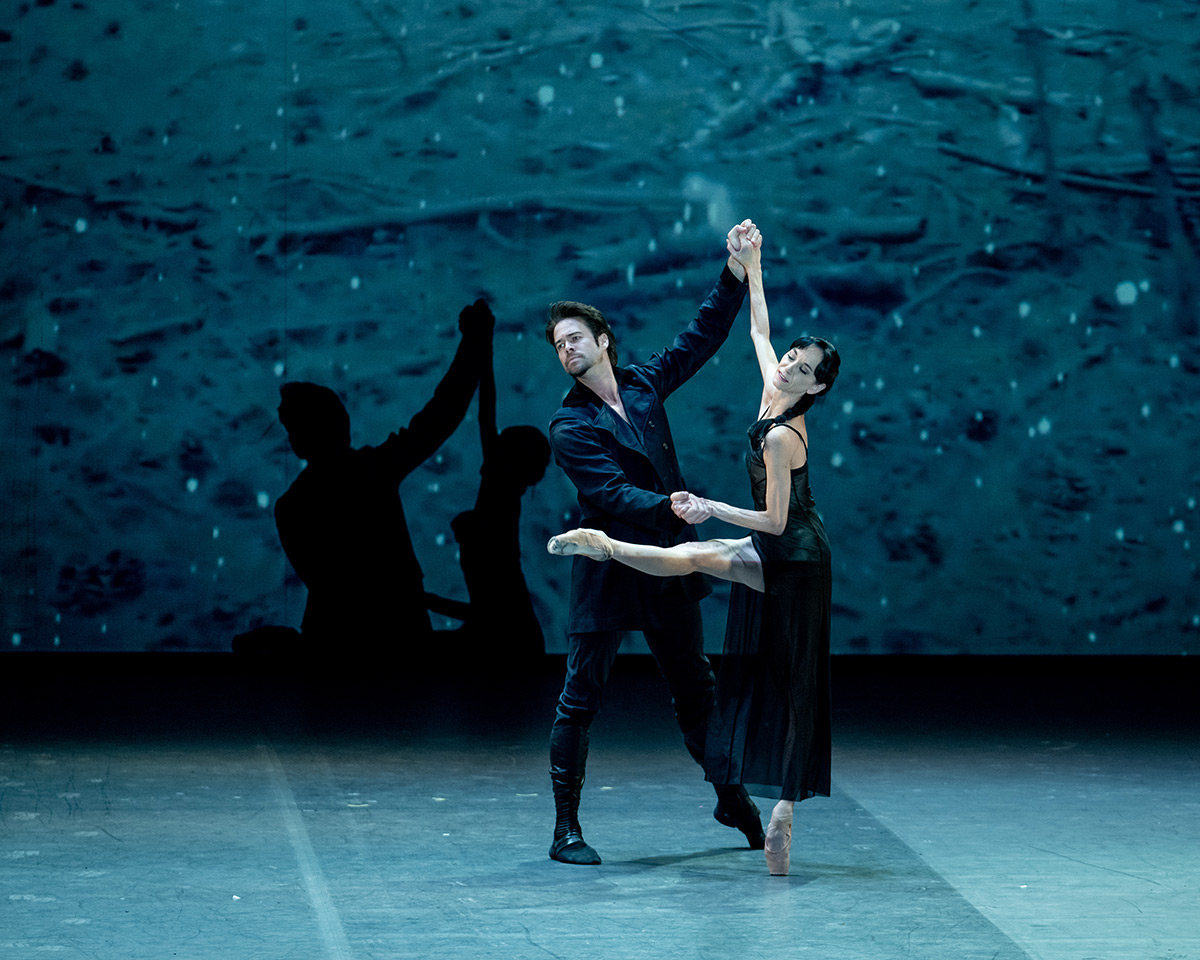
© Jack Devant. (Click image for larger version)
Sheer joy ended the first half of the evening: the Don Quixote pas de deux, danced by Marianela Nunez and Vadim Muntagirov. They performed it not as a flashy gala number but as a masterclass in classical ballet etiquette. He offered a hand and she deigned happily to accept it; he stepped past her whirling leg à la seconde to steady her in an arabesque penchée; they enjoyed their absolute command of the choreography in response to Minkus’s music. Nunez gave an extra smile and nod to conductor Lo in the pit as she and Muntagirov took their bows.
The second half opened with a pas de deux from Paquita, performed by Katja Khaniukova and Francesco Gabriele Frola, both with English National Ballet. They made it a virtuoso showcase, showing what they could do without the rapport that Nunez and Muntagirov have with each other. George Williamson’s Mesh came next, for Ksenia Ovsyanick and Denis Vieira from Staatsballett Berlin. Costumed in blue leotards like a second skin, with lighting that emphasised their muscular bodies, they clung together in intricate enfoldings, parting only to clasp each other again. A programme note claimed the duet ‘reflects on the transient nature of creation and the negotiation of two individual bodies and minds that come together to form a single harmonised energy.’ As individual performers, they remained anonymous.

© Jack Devant. (Click image for larger version)
It was a pleasure to see Maria Kochetkova again, now that she has joined English National Ballet as a lead principal, after dancing with a number of companies and guesting all over the world. She danced the Act III grand pas de deux from The Sleeping Beauty with Jeffrey Cirio, also with ENB. They observed the formal etiquette of a courtship, with Kochetkova‘s Aurora a filigree princess growing up to become a bride.
By way of contrast, Baulac and MacKay returned for a folk dance duet by Russian choreographer Kirill Radev. At Sunset was inspired by an old Corsican song about an impossible love affair between a couple who meet for the last time as the sun sets. Created to be shown on a Russian TV channel, it’s charming, melancholic number for a versatile pair of dancers.
The next two duets were mercifully brief: Vivaldi Summer pas de deux by Giuseppe Piccone for himself and Ludmila Konovalova and Edward Clug’s Radio and Juliet extract, danced by ENB’s Khaniukova and Aitor Arrieta to recorded music by Radiohead. (Birmingham Royal Ballet has recently taken the one-act ballet into its repertoire.)
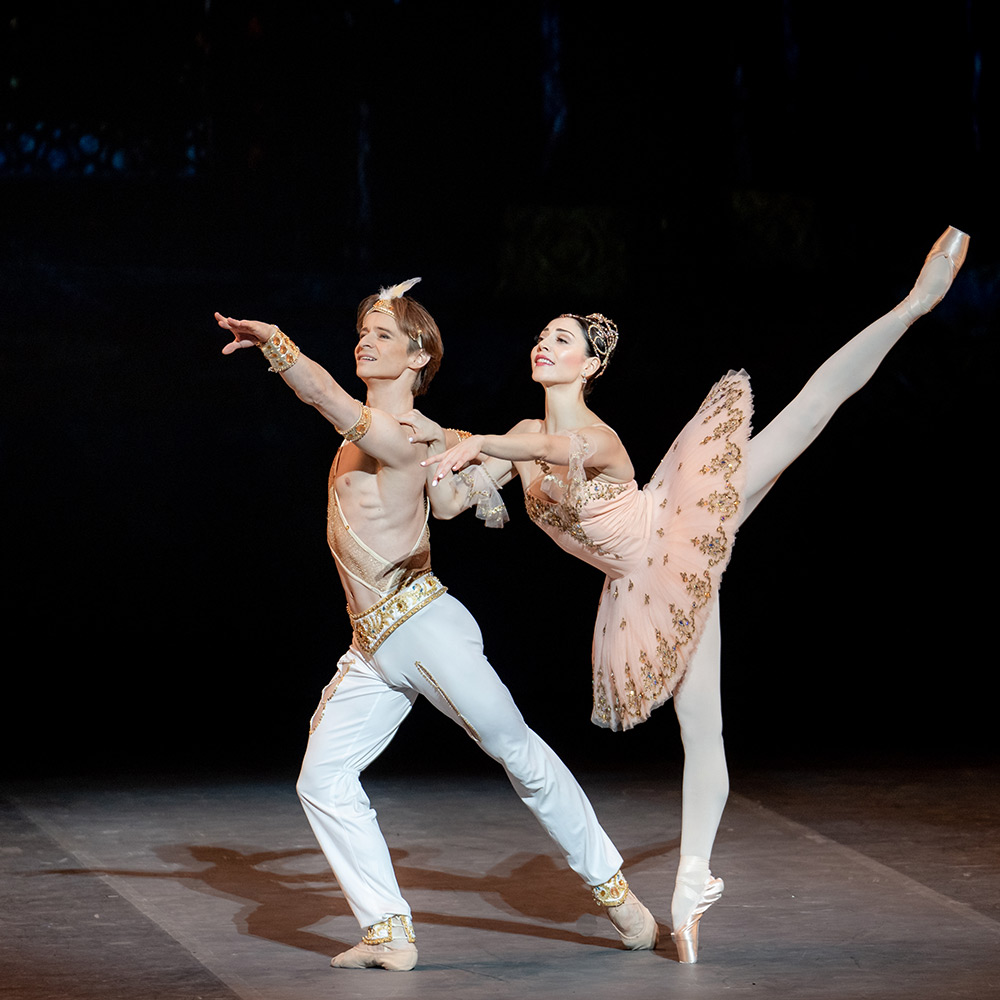
© Jack Devant. (Click image for larger version)
The orchestra returned for the concluding pas de deux from Le Corsaire, whose music is attributed variously to Minkus, Drigo and Adolphe Adam. A pas de trois in the ballet, it’s given in galas as a duet for a ballerina and a non-specific exotic admirer – danced here by Maia Makhateli from Dutch National Ballet, and Daniil Simkin, now with Staatsballett Berlin and American Ballet Theatre. They delivered all the pyrotechnics, she grand and gracious, he a firecracker in catherine-wheel leaps and spins. They rounded off the belated 16th Ballet Icons Gala in fine style. We must hope that the next one, due in London in February 2022 to celebrate Serge Diaghilev’s 150th anniversary, will be able to take place without restrictions or cancellations.








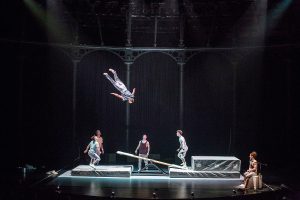
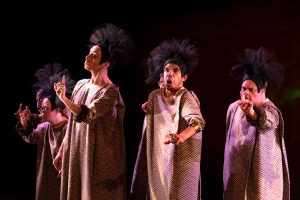
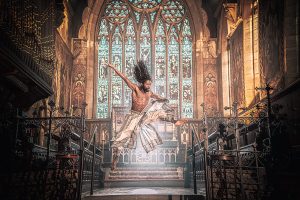

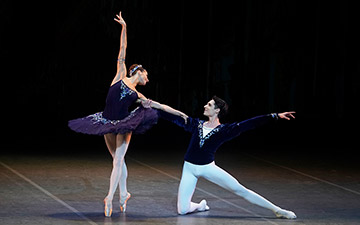
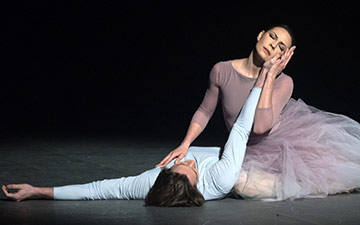

You must be logged in to post a comment.